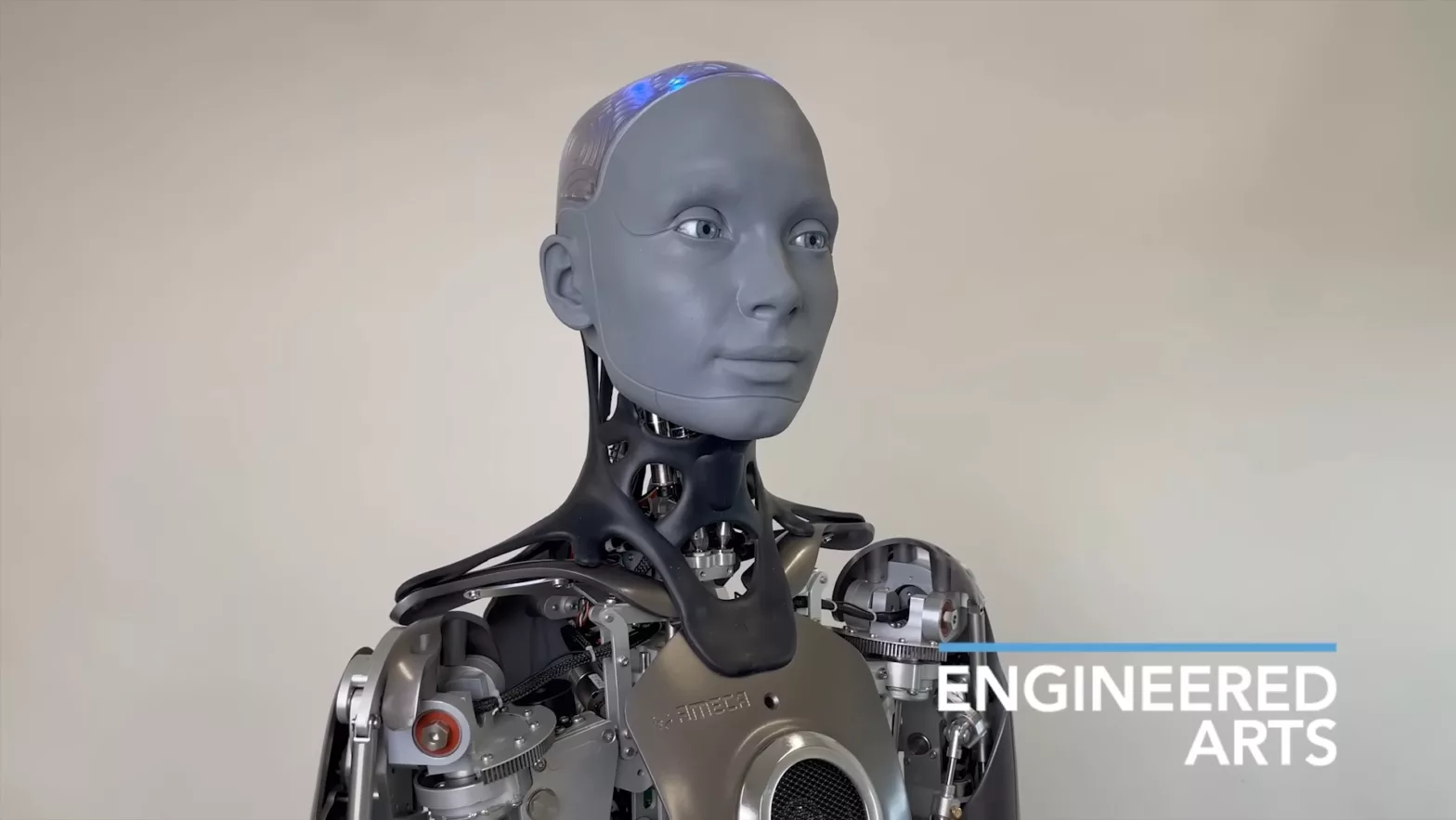Ameca is an education & entertainment humanoid. In a recent demo, the robot used GPT-3 and Stable Diffusion to understand a query and draw a sketch.
An advanced humanoid robot called Ameca was demonstrated being asked for a drawing of a cat and using a marker to draw on a whiteboard. The robot is designed and manufactured by Engineered Arts.
Engineered Arts is a British company that designs and manufactures humanoid entertainment robots. They have four market-ready humanoids—Ameca, Mesmer, Quinn, and RoboThespian. Ameca was developed in 2021. Recently, she was infused with drawing capabilities using Stable Diffusion. The robot is an outcome of over a decade of work in robotics. AI is something the company is just now foraying into.
The drawing was closer to what a toddler would attempt than what Stable Diffusion generates.
The process of drawing involves Ameca generating and selecting an image with Stable Diffusion. Then, Ameca says, “I skeletonize the image and vectorize it.” This process essentially derives the skeleton of the generated art in a vector form (computer-editable art, contrary to “raster” or “bitmap” form, which is photographs). A vector image is necessary for any computer to understand it. Vector images have paths, angles, curves, etc. that a machine can understand.
From there, Ameca plans and executes the trajectory to draw the image on a canvas.
When Ameca receives a response that the drawing is a bit sketchy, the robot correctly ascertains the right meaning of the word (“crude” in this context and not “suspicious”). Her response was, “If you don’t like my art you probably just don’t understand art.” The robot made a face, too, when speaking this.
In fact, expressions are one of the main focuses of the Ameca robot. For example, when Ameca thinks, the eyeballs move up.
The robot is designed to mimic human movement too, such as how the vertebra moves or how the face twitches to express certain feelings.
Here is the video of the drawing:
Mogan Roe, one of the engineers from the 35-odd team, teased Ameca during a This Morning episode on May 18, where he said how the focus was mainly on expressions and gesturing.
Notably, WIRED did a demo of the robot back in February 2022 with Will Jackson, founder and CEO of Engineered Arts. At that time, they were selling the robots to organizations that would put the AI inside the robot, while the company only focused on the looks, movement, and expressions. Each unit ended up costing $120,000 to $500,000 and took roughly 14 weeks to develop.
Primarily, the robot is built to educate and entertain. And now, the company has advanced Ameca further by setting her up with generative AI models that are widely available and fairly accurate in understanding human prompts.
By no means was the drawing photorealistic, but that’s what makes it more profound. Being able to generate a sketch is a big feat for a robot—Whereas copying and transferring art from Stable Diffusion directly would not be a humanlike activity at all, or “uncanny” even. Given the robot continues to improve in how it handles the marker or traces the paths, with possibly more granular control over strokes, it could soon “learn” to draw much as a child does. Though this is very far from an apocalyptic thought, it certainly helps us visualize what we truly mean when we say “artificial intelligence,” a phrase that’s quickly losing its meaning in the “I love ice cream” kind of way with overuse.

